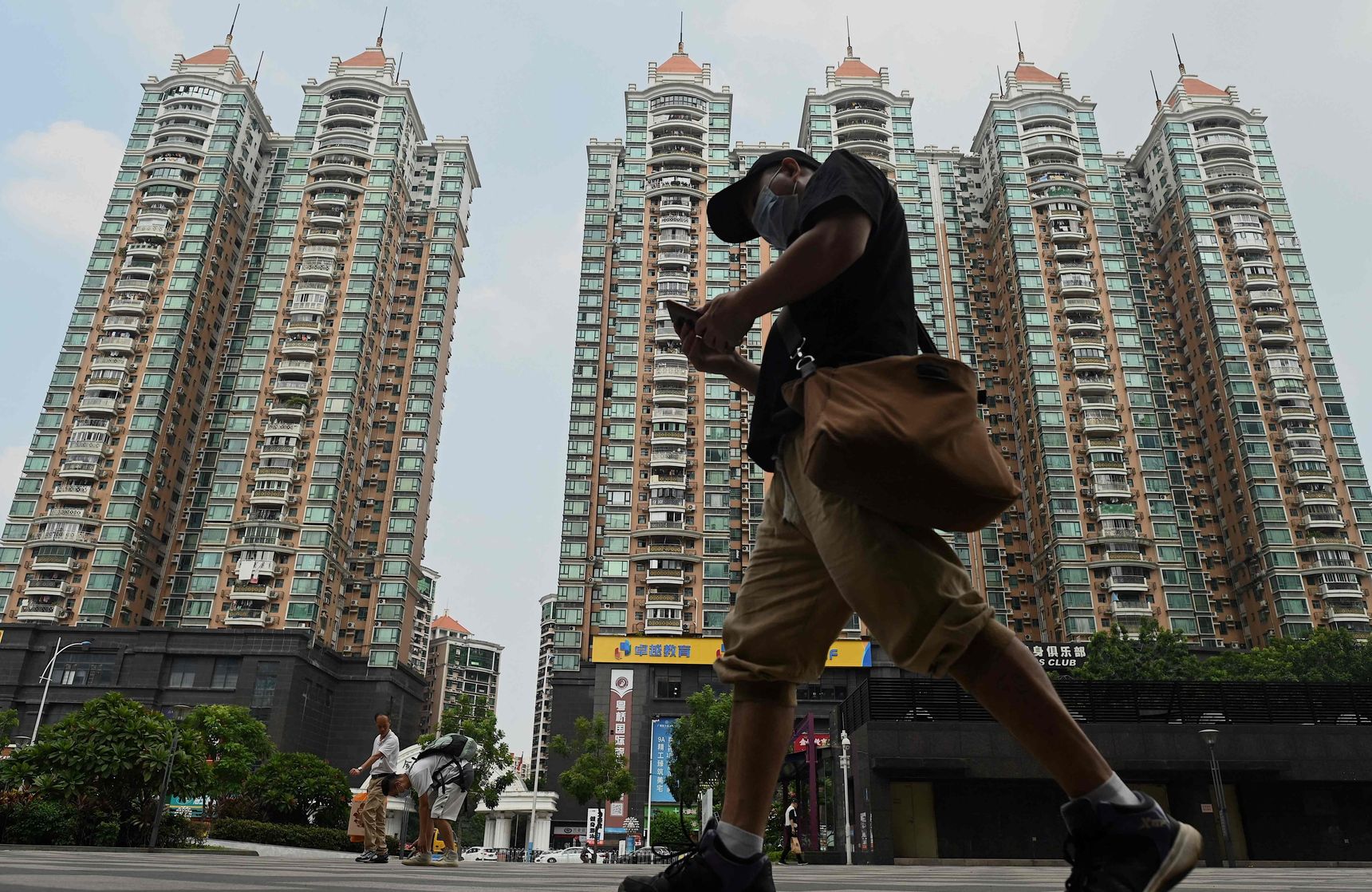China Evergrande Fallout Hits Western Bond Funds
Bonds of other property developers dropped sharply.
The potential default of real-estate developer China Evergrande Group is taking a toll on funds in Europe and the U.S. that chased high yields in the Chinese corporate bond market.
Concerns that Evergrande might not pay its bonds this month triggered selling of other companies in the country’s property sector, weighing down funds managed by Ashmore Group, BlackRock Inc. and Pacific Investment Management Co., among others.
While Evergrande bonds have been trading around 25 cents on the dollar for much of September, selling spread Monday to other large developers. Yuzhou Properties‘s 8.5% bond due in 2024 dropped about 10% to 75 cents on the dollar, according to Advantage Data Inc.
Fears of spreading fallout hit U.S. stocks and bond yields Monday, driving the yield on the benchmark 10-year Treasury note down to 1.308%, according to Tradeweb, from 1.369% Friday.
Western money managers increasingly purchased Chinese corporate bonds in recent years despite signs of a housing bubble. The buyers were looking for investments that paid more than the anemic yields in their domestic markets and could benefit from China’s high economic growth compared with developed markets. Many also believed that China’s government would bail Evergrande out if it foundered because of its size—the firm owed about $89 billion of debt as of June.
Some of the China bulls, like Ashmore, were emerging-markets specialists, but others were global-bond funds that traffic in developed and developing markets.
One of Ashmore’s larger funds lost about 1% last week and is underperforming comparable funds by 3.62 percentage points this year, according to data from Morningstar. The firm owned by U.K. financier Mark Coombs also performed poorly in 2020 after large bets in Argentina, Ecuador and Lebanon backfired in quick succession. Its stock has dropped about 20% this year, according to data from S&P Capital IQ. A spokesman for Ashmore declined to comment.
A global income fund managed by BlackRock lost about 0.31% last week and is lagging behind competitors by roughly one percentage point in 2021. The Ashmore fund was about 5% invested in Chinese corporates and the BlackRock fund had an approximately 7% exposure.
Worries may be overblown that default by Evergande could trigger a systemic crisis in China, much like Lehman Brothers Holdings Inc. did in the U.S., because other developers are functioning well, said Alan Siow, a portfolio manager at Ninety One.
“We don’t think Lehman is an apt analogy,” said Mr. Siow, who does not own any Evergande debt in his emerging-markets corporate bond fund and is focused on finding “companies that are best positioned to succeed in this environment.”
Distressed-debt hedge funds are also turning their sights on China’s corporate bonds, hoping to buy at bargain prices and to profit by restructuring the debt or by selling out when the broader market rebounds. “We’re doing a lot of heavy-duty work on [China],” said a portfolio manager at a New York-based fund.
A group of Evergrande bondholders formed a committee in recent weeks to create an organized negotiating block in restructuring talks with the company and the Chinese government, a person familiar with the matter said. Investment bank Moelis & Co. and law firm Kirkland & Ellis LLP are advising the group, the person said.
 Copyright 2020, Dow Jones & Company, Inc. All Rights Reserved Worldwide. LEARN MORE
Copyright 2020, Dow Jones & Company, Inc. All Rights Reserved Worldwide. LEARN MORE
This stylish family home combines a classic palette and finishes with a flexible floorplan
Just 55 minutes from Sydney, make this your creative getaway located in the majestic Hawkesbury region.
Continued stagflation and cost of living pressures are causing couples to think twice about starting a family, new data has revealed, with long term impacts expected
Australia is in the midst of a ‘baby recession’ with preliminary estimates showing the number of births in 2023 fell by more than four percent to the lowest level since 2006, according to KPMG. The consultancy firm says this reflects the impact of cost-of-living pressures on the feasibility of younger Australians starting a family.
KPMG estimates that 289,100 babies were born in 2023. This compares to 300,684 babies in 2022 and 309,996 in 2021, according to the Australian Bureau of Statistics (ABS). KPMG urban economist Terry Rawnsley said weak economic growth often leads to a reduced number of births. In 2023, ABS data shows gross domestic product (GDP) fell to 1.5 percent. Despite the population growing by 2.5 percent in 2023, GDP on a per capita basis went into negative territory, down one percent over the 12 months.
“Birth rates provide insight into long-term population growth as well as the current confidence of Australian families,” said Mr Rawnsley. “We haven’t seen such a sharp drop in births in Australia since the period of economic stagflation in the 1970s, which coincided with the initial widespread adoption of the contraceptive pill.”
Mr Rawnsley said many Australian couples delayed starting a family while the pandemic played out in 2020. The number of births fell from 305,832 in 2019 to 294,369 in 2020. Then in 2021, strong employment and vast amounts of stimulus money, along with high household savings due to lockdowns, gave couples better financial means to have a baby. This led to a rebound in births.
However, the re-opening of the global economy in 2022 led to soaring inflation. By the start of 2023, the Australian consumer price index (CPI) had risen to its highest level since 1990 at 7.8 percent per annum. By that stage, the Reserve Bank had already commenced an aggressive rate-hiking strategy to fight inflation and had raised the cash rate every month between May and December 2022.
Five more rate hikes during 2023 put further pressure on couples with mortgages and put the brakes on family formation. “This combination of the pandemic and rapid economic changes explains the spike and subsequent sharp decline in birth rates we have observed over the past four years,” Mr Rawnsley said.
The impact of high costs of living on couples’ decision to have a baby is highlighted in births data for the capital cities. KPMG estimates there were 60,860 births in Sydney in 2023, down 8.6 percent from 2019. There were 56,270 births in Melbourne, down 7.3 percent. In Perth, there were 25,020 births, down 6 percent, while in Brisbane there were 30,250 births, down 4.3 percent. Canberra was the only capital city where there was no fall in the number of births in 2023 compared to 2019.
“CPI growth in Canberra has been slightly subdued compared to that in other major cities, and the economic outlook has remained strong,” Mr Rawnsley said. “This means families have not been hurting as much as those in other capital cities, and in turn, we’ve seen a stabilisation of births in the ACT.”
This stylish family home combines a classic palette and finishes with a flexible floorplan
Just 55 minutes from Sydney, make this your creative getaway located in the majestic Hawkesbury region.






















